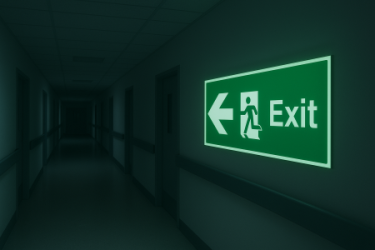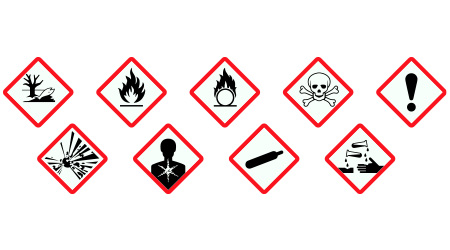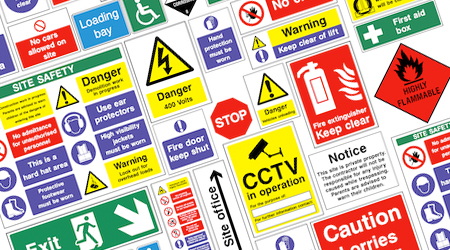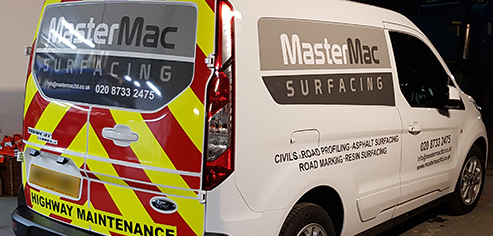Understanding Chapter 8 Chevrons: What They Are, Why They Are Required, and Their Regulatory Framework?
Chapter 8 Chevrons play a crucial role in maintaining safety on UK roads, particularly in industries that involve work on or near roadways. By ensuring high visibility for vehicles, these chevrons help to prevent accidents and protect both workers and the public. Compliance with Chapter 8 guidelines, as outlined in the Traffic Signs Manual and supported by broader health and safety regulations, is essential for companies operating in road construction, utilities, and other related sectors.
Understanding and adhering to these requirements not only promotes safety but also ensures that companies meet their legal obligations, avoiding potential fines and ensuring smooth operation within their respective industries. To learn more about the products and services available to ensure compliance, visit the EU Signs Ltd website.
What Are Chapter 8 Chevrons?
Chapter 8 Chevrons refer to the high-visibility markings typically seen on the rear of vehicles used for road maintenance, construction, and other related activities. These markings are part of the guidelines outlined in the UK’s Chapter 8 of the Traffic Signs Manual, which provides detailed instructions on the design and application of temporary traffic management signage and vehicle markings.
Chevrons are made up of alternating stripes of red and yellow reflective material, usually arranged in a diagonal pattern. The purpose of these chevrons is to enhance the visibility of vehicles working on or near the road, ensuring they are easily seen by other road users, particularly in low-light conditions or adverse weather.
For a detailed breakdown of how these chevrons are designed and applied, you can refer to our comprehensive guide on Chapter 8 vehicle livery on the Ensigns website.
Why Are Chapter 8 Chevrons Required?
Chapter 8 Chevrons are required to ensure the safety of both the vehicle operators and the general public. Vehicles used in road maintenance, construction, and other infrastructure-related work often operate in or near live traffic, which poses significant risks. The high-visibility chevrons help to:
- Increase Visibility: The bright, reflective chevrons make vehicles more noticeable to oncoming traffic, reducing the risk of collisions, especially in low-visibility situations such as nighttime or during inclement weather.
- Warn Other Road Users: The chevrons indicate to drivers that they are approaching a potential hazard, such as a stationary vehicle or roadworks. This gives drivers ample time to slow down or change lanes, thereby preventing accidents.
- Compliance with Safety Standards: Using Chapter 8 Chevrons ensures that vehicles are compliant with UK safety regulations, helping companies to avoid fines or legal issues related to inadequate safety measures. For businesses looking to implement these markings, EU Signs Ltd offers a range of Chapter 8 compliant products that meet all regulatory requirements.
Are They Mandatory?
Chapter 8 Chevrons are mandatory in several industries where vehicles are used on or near public roads, particularly in situations that involve stopping, parking, or moving slowly on the road. Some key industries include:
- Road Construction and Maintenance: Vehicles involved in roadworks, whether for repairs, resurfacing, or new construction, must use Chapter 8 Chevrons to ensure they are visible to other road users. For those in the construction industry, custom vehicle livery tailored to specific needs is also available.
- Utility Services: Vehicles used by utility companies (e.g., water, gas, electricity) that need to access underground services or infrastructure near roadways also require chevrons. EU Signs can provide specialised sign writing and chevrons for utility vehicles that meets Chapter 8 standards.
- Emergency Services: While not always required, emergency vehicles such as ambulances, fire engines, and police vehicles may use chevrons to increase visibility during roadside incidents.
- Waste Management and Street Cleaning: Vehicles used for street cleaning, refuse collection, and similar services that operate on public roads are also required to display these high-visibility markings.
UK Regulations
The primary regulatory framework governing the use of Chapter 8 Chevrons in the UK is set out in the Traffic Signs Manual: Chapter 8. This manual is not a law in itself but serves as a guideline for best practices in temporary traffic management. However, non-compliance with these guidelines can result in violations of health and safety laws, particularly under the Health and Safety at Work Act 1974, which mandates employers to ensure the safety of their employees and the public.
Additionally, the Construction (Design and Management) Regulations 2015 (CDM 2015) require that construction projects, including roadworks, are planned and managed safely. Part of this safety management involves the use of appropriate signage and vehicle markings, including Chapter 8 Chevrons. For those involved in construction and maintenance, ensuring your vehicles are equipped with compliant reflective decals is crucial to meeting these regulations.
* The information provided in this blog is for general informational purposes only and is not intended as legal advice. While we strive to ensure the accuracy and reliability of the content, regulations and standards may change. We recommend consulting with a qualified professional or relevant authorities to ensure compliance with current laws and guidelines. EU Signs Ltd and its affiliates disclaim any liability for actions taken based on the information presented in this blog.
Related Articles:
Our Products:











Recent Comments